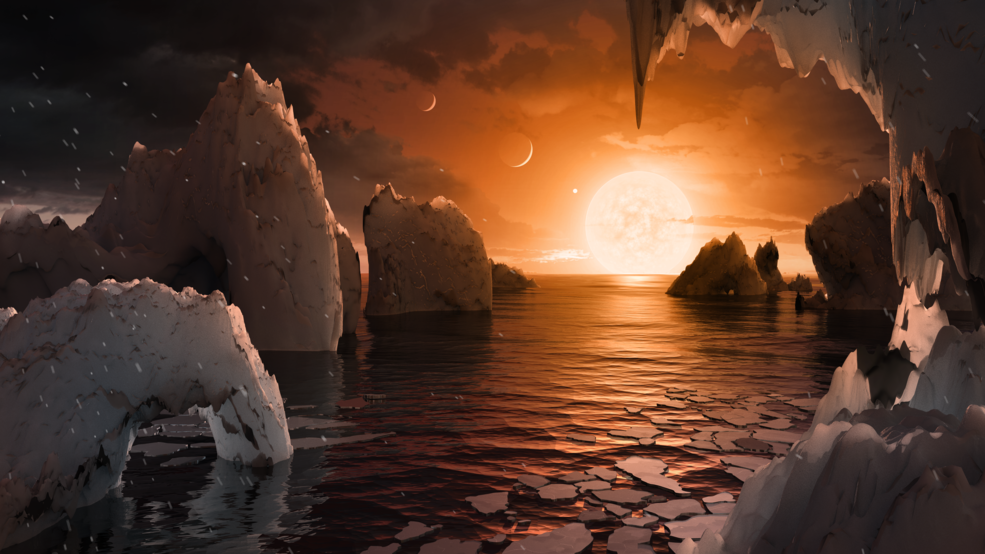
NASA announced today the discovery of seven Earth-sized exoplanets (planets outside our solar system) revolving around the sun TRAPPIST-1. This represents the largest finding of planets orbiting a distant sun to date. Revealed by NASA’s Spitzer Space Telescope, three of these exoplanets are in what is known as the ‘habitable zone’, a Goldilocks region of solar orbits that is just the right distance from a sun to support liquid water on a rocky planetary surface. Thomas Zurbuchen, associate administrator of the agency’s Science Mission Directorate in Washington, said, “This discovery could be a significant piece in the puzzle of finding habitable environments, places that are conducive to life.”
TRAPPIST-1 is named for The Transiting Planets and Planetesimals Small Telescope (TRAPPIST) in Chile, where researchers first discovered the star and three planets orbiting it in May of 2016. As announced today, the Spitzer space telescope (in combination with several ground-based telescopes), confirmed the original three planets, and the discovery of four more, for a total of seven planets orbiting the ultra-cool dwarf star. Although ultra-cool dwarf stars are the most ubiquitous type observed in our universe, they are also unique, in that liquid water could potentially survive on planets orbiting very close to them. All seven of the TRAPPIST-1 planetary orbits are closer to their host star than Mercury is to our own sun. Michael Gillon, lead author of the paper and the principal investigator of the TRAPPIST exoplanet survey at the University of Liege, Belgium, called the system, “the best target yet for studying the atmospheres of potentially habitable, Earth-size worlds.”
Although the solar system is just under 40 light years (235 trillion miles) from Earth—too far away for us to reach with any current technology—the discovery represents yet another step in answering the top scientific question, “Are we alone?” As Thomas Zurbuchen said in the NASA conference announcing the discovery, “Nature will undoubtedly reveal itself to be far greater than our imagination.”

This is of particular interest to me. Cool, red dwarfs, especially relatively near by, are extremely good candidates for SETI searches. Mostly ignored due to a gap in observational technology, only rectified relatively recently, this type of star system is poised to become real headline makers in the years to come.